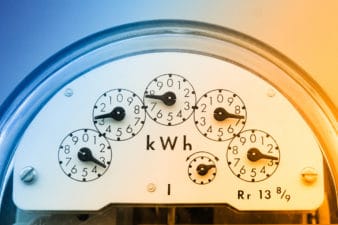If you’re drawn to ultra-high dividend yields, you’re not alone. Those payouts look irresistible, especially in uncertain markets. But before you buy, it’s crucial to separate the income gems from the yield traps. Here’s what to consider to find a safe ultra-high dividend stock that can actually keep paying you over time instead of luring you in before cutting its payout.
What to watch
Start with how the dividend is funded. The best high-yield stocks use free cash flow, not debt or asset sales, to cover dividends. Free cash flow is what’s left after all operating and capital expenses, so it’s the money truly available to shareholders. If the company’s payout consistently exceeds its free cash flow, that’s a red flag. A payout ratio below 80% of free cash flow is usually a sign of stability.
Next, examine the balance sheet. High-yield companies often carry heavy debt, which isn’t necessarily bad. But debt becomes dangerous if interest costs start eating into cash flow. Then dig into the business model itself. Safe high-yielders usually operate in slow-changing, cash-generating sectors like utilities, pipelines, telecom, or real estate. These dividend stocks make money from long-term contracts, regulated pricing, or subscription models, not volatile one-off sales.
Then consider dividend history and management discipline. Has the company maintained or raised its dividend through past recessions and rate cycles? A long, steady history tells you management values shareholder payouts and plans conservatively. Frequent dividend cuts or erratic increases are warning signs that the payout may not be reliable. A “high yield” that’s recently jumped might not be generosity; it might reflect a plunging share price because the market expects trouble.
What about BRE?
If you’re looking at Bridgemarq Real Estate Services (TSX:BRE) as a high-dividend yield pick, there are certainly parts that look appealing, and some that raise red flags. The yield is tempting, but the risks are significant.
First, let’s look at what looks good. BRE currently offers a dividend yield around 9.9% at writing, paying out monthly dividends. This can be incredibly appealing to income seekers who like having that regular cash flow. What’s more, the yield is far above the market average and many real estate peers. So that makes it stand out for investors hunting that income.
On the concerning side? Coverage of the dividend is very weak. The major issue is that the payout is not backed by strong earnings or free cash flow. Right now, the payout ratio sits at 118%, which isn’t terrible but certainly not ideal for a real estate company. Furthermore, its earnings per share are negative, so when profits are negative and dividends continue, that can raise sustainability concerns. And the worst part? The dividend growth rate over the past three years is flat, so growth is minimal or non-existent.
Foolish takeaway
If you think the yield compensates you for the risk of a potential dividend cut or business deterioration, and you’re comfortable with much uncertainty, then BRE could be a high‐income play. However, if your goal is dividend safety, growth, and a business you feel confident will maintain payments for many years, then BRE falls short in key areas.
A truly safe ultra-high dividend stock balances generous income with durability. It earns enough to cover payouts comfortably, manages debt conservatively, operates in a predictable sector, and has leadership with a track record of protecting the dividend through thick and thin. So don’t chase the highest yield you see, chase the most dependable one. The difference between 7% that lasts and 10% that disappears is the difference between income and regret.








